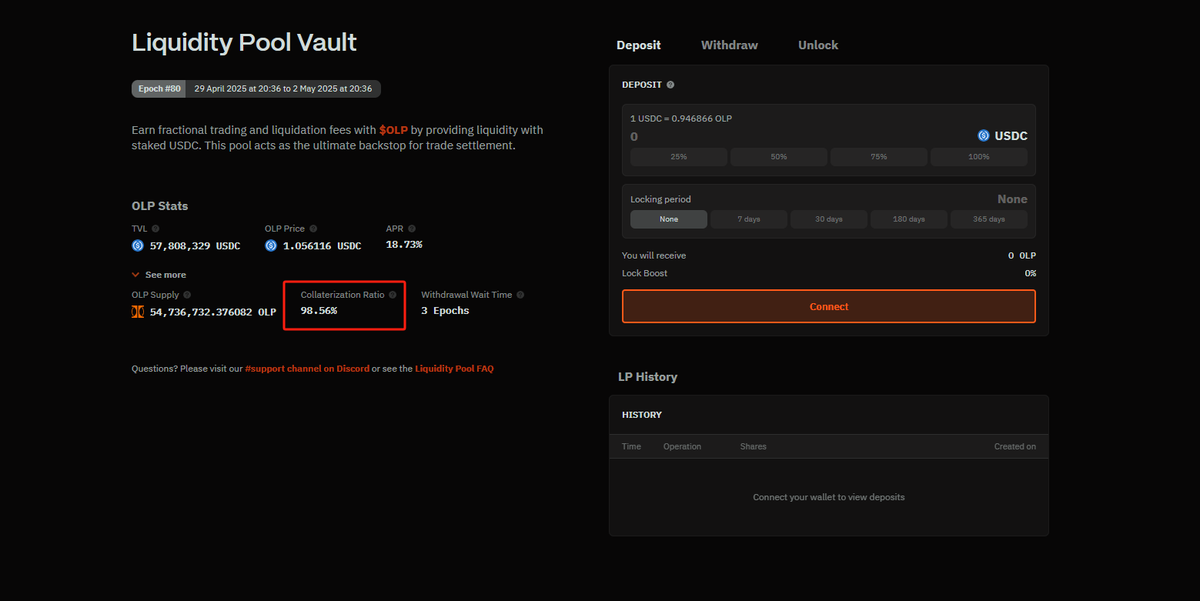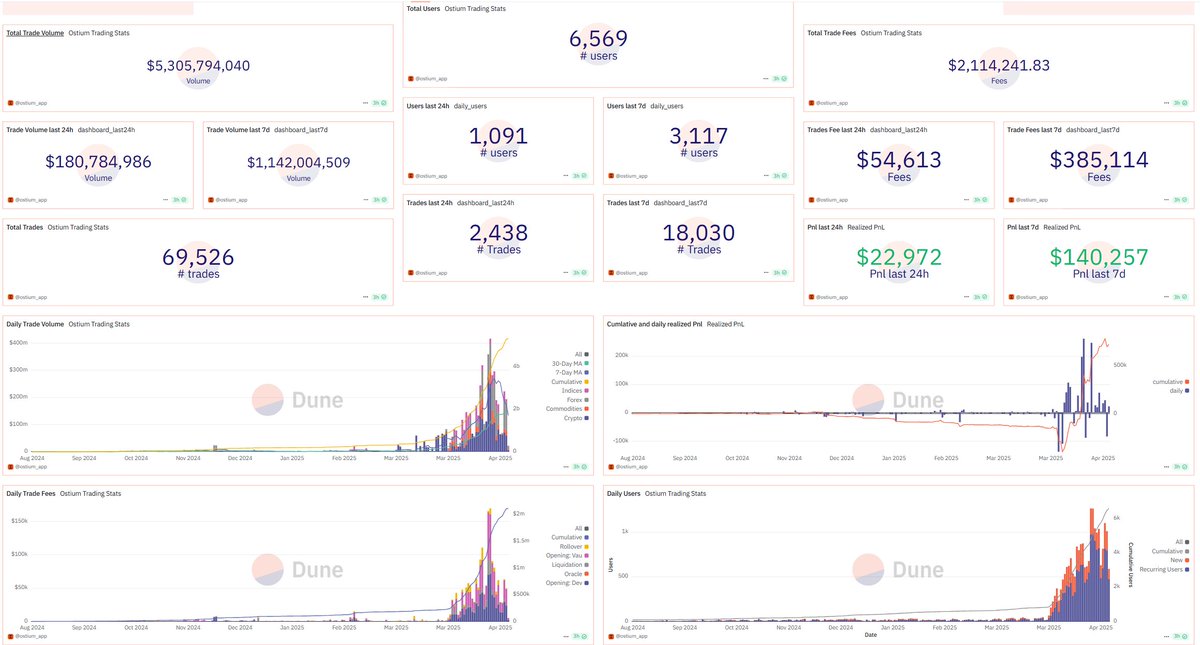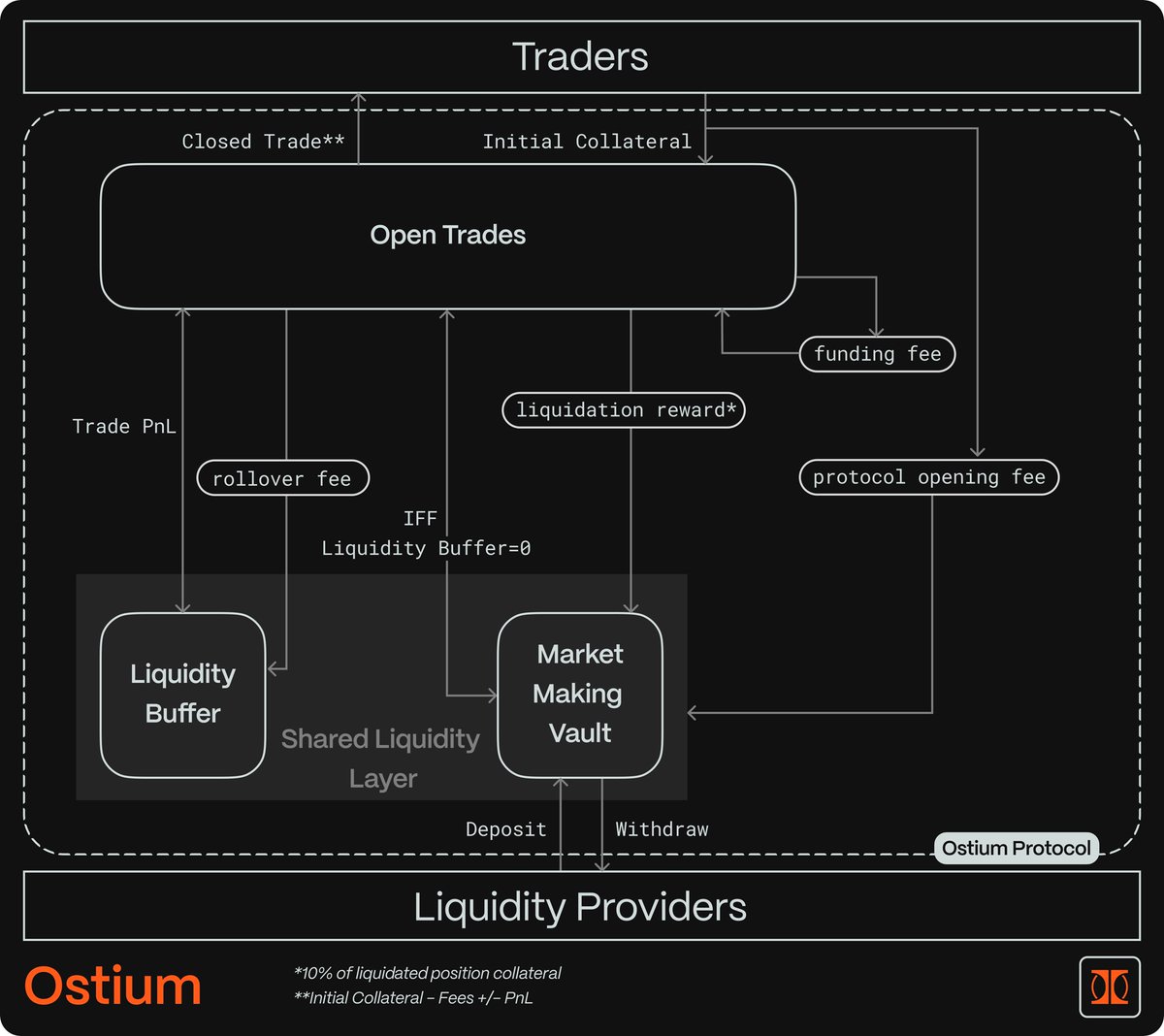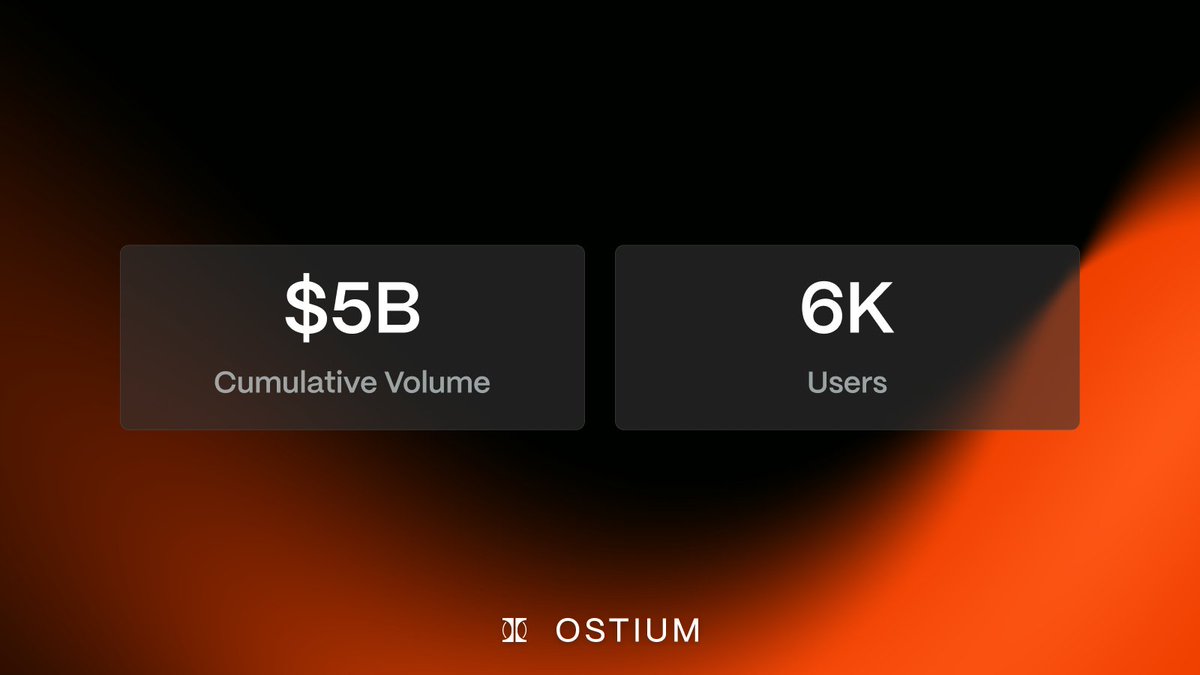Deposit OLP (Ostium's LP pool) to earn trading fees + liquidation fees,
Is it a good choice?
Recently, the RWA contract exchange @OstiumLabs has seen rapid growth in data after launching its points program. Within just one month, both trading volume and TVL have significantly increased, bringing considerable returns to users depositing in the LP pool. According to the dashboard, the average annualized return over the past month was 18%.
However, one major characteristic of Perp DEX liquidity pools is the high uncertainty of LP returns. For Perp DEXs operating under a pure AMM model, all users are Takers, essentially betting against the pool—when users profit, LPs incur losses.
Therefore, most platforms employ various mechanisms to reduce LPs' unilateral risk exposure, but this is not without cost and is not always perfect. It's like a seesaw, with traders on one end and LPs on the other:
- When the LP side rises and earns more,
- The trader side decreases and earns less.
Essentially, it remains a zero-sum game.
👉 Risk Layering: Senior and Subordinated
As a successor to GMX/GNS principles, Ostium's core mechanism further optimizes the design of LP safety cushions pioneered by its predecessors. It systematizes this into a risk-reward layering structure commonly seen in traditional financial structured products, with Senior (priority) and Subordinated (junior) layers:
- Liquidity Buffer (Subordinated Pool):
Primarily acts as a risk absorption pool, used to prioritize settling traders' profit and loss fluctuations. It can accumulate significant profits when traders incur losses but will suffer losses when traders profit. Its main role is to protect and buffer LPs, preventing them from directly facing the impact of traders' profits.
- MM Vault (Senior Pool):
Provides liquidity to traders, but only acts as the counterparty for settlement when the Liquidity Buffer is exhausted. Normally, it only earns 50% of trading fees and 100% of liquidation penalty fees. Participants in this pool are similar to higher-priority bondholders in traditional finance, receiving priority repayment in case of default.
In simple terms, the Subordinated Pool profits by absorbing users' losses, making it naturally more attractive but also riskier. By absorbing most fluctuations through the Subordinated Pool, the Senior Pool's risk decreases, improving the risk-reward ratio and attracting more capital.
👉 The Subordinated Pool is currently in a loss state
Although the Senior Pool has certain advantages, the Subordinated Pool is currently in a loss state, meaning LPs are exposed to risks. The Subordinated Pool has not yet opened for deposits and relies solely on traders' losses to accumulate funds, providing limited safety cushions.
The dashboard shows that the Senior Pool's Collateralization Ratio is 98.56%. With a TVL of $57.8 million, this corresponds to approximately $830,000 in user profits that need to be shared by LPs.
Fortunately, the platform's fee performance is decent, generating a total of about $2.11 million in fees and less than $200,000 in liquidation fees. Senior Pool LPs earned $1.05 million in fees and all liquidation fees, enough to cover losses. If you had deposited in the Senior Pool from the beginning, you could still be profitable overall. For details on liquidation fees, see 🔽
However, for new users, without the Subordinated Pool absorbing risks, if the platform's trading activity decreases and there aren't enough fees to compensate, your uncertainty will rise sharply.
👉 Pain Points of AMM Perp: The Cost of LP Protection
This actually reflects a core contradiction of AMM Perp: the liquidity provided by LPs is the cornerstone of the platform. To protect LPs from losses, the platform must design mechanisms to reduce LPs' unilateral risk exposure and provide risk compensation. However, this protection is not without cost:
- Increased trading costs:
In cases of significant one-sided market trends or sharp increases in market volatility, due to having only a single liquidity pool that may lack sufficient liquidity due to withdrawals, trading slippage, premiums, and holding costs can increase significantly, deviating from normal market levels and deterring users.
- Limited LP flexibility:
Market-making strategies are entirely determined by the AMM, leaving LPs without the flexibility to hedge. Most rely on the team for external hedging, lacking proactivity.
This may explain why pure AMM-mode Perp DEXs often encounter bottlenecks after reaching a certain stage of development. For example, GNS, which also offers forex and stock contract trading, had a TVL of only $50 million at its peak in 2023, now reduced to $25 million, with daily trading volume dropping to $30 million (Ostium's current daily trading volume is $150 million).
In contrast, Hyperliquid, which adopts an AMM + order book combination model, has a scale dozens of times larger than the above. Although the recent JellyJelly incident caused significant impact, AMM is not its sole pillar—when AMM fails, other market makers on the order book can step in, and AMM can more flexibly decide whether to take orders, alleviating liquidity pressure.
While the AMM Pool model is very suitable for farming—such as Jupiter's JLP and GMX's GLP, which have become important underlying assets in DeFi, widely used for staking and yield farming—the addition of an order book seems to offer greater flexibility, providing the platform with higher scalability and resilience, especially when facing market volatility and liquidity challenges.



1.91K
2
The content on this page is provided by third parties. Unless otherwise stated, OKX is not the author of the cited article(s) and does not claim any copyright in the materials. The content is provided for informational purposes only and does not represent the views of OKX. It is not intended to be an endorsement of any kind and should not be considered investment advice or a solicitation to buy or sell digital assets. To the extent generative AI is utilized to provide summaries or other information, such AI generated content may be inaccurate or inconsistent. Please read the linked article for more details and information. OKX is not responsible for content hosted on third party sites. Digital asset holdings, including stablecoins and NFTs, involve a high degree of risk and can fluctuate greatly. You should carefully consider whether trading or holding digital assets is suitable for you in light of your financial condition.



